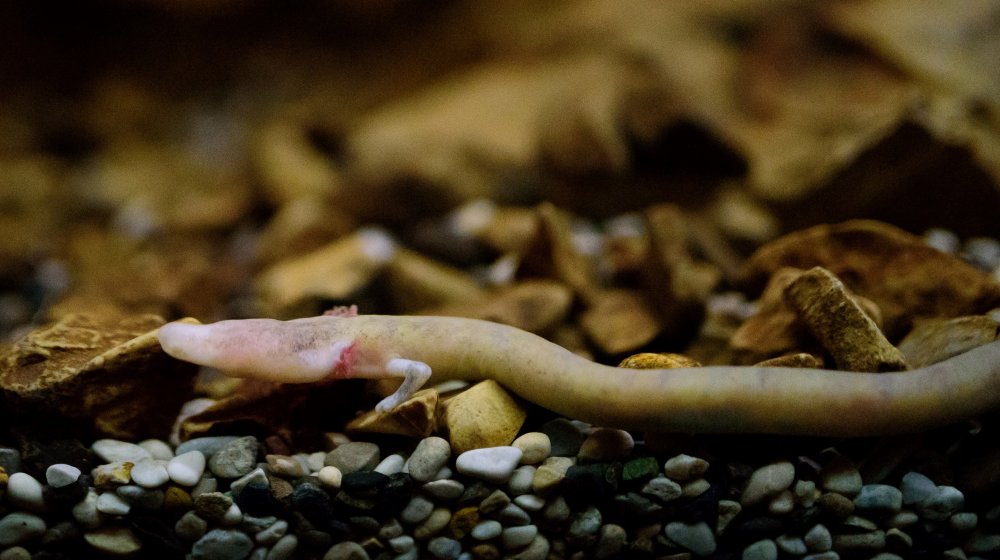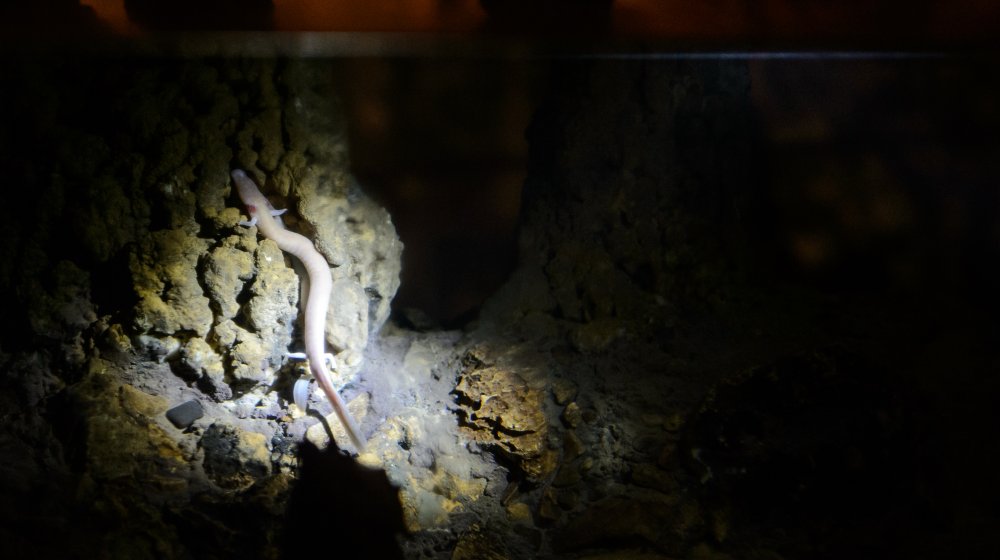The Immortal Salamanders That People Mistook For Dragons
In 1689, Johann Weikhard von Valvasor went to press with astonishing news: he'd found baby dragons in Slovenia.
The head-turning claim was published in his book The Glory of the Duchy of Carniola, an encyclopedic anthology of information pertaining to what's now Slovenia. In it, he described tales told by locals of the undeveloped offspring of subterranean dragons that would wash up through the caves after a heavy rain. Skeptical, he asked a villager to bring him one, and received a creature "Barely a span long, akin to a lizard, in short, a worm and vermin of which there are many hereabouts."
Von Valvasor was, for the first time in scientific history, describing an olm, a species of highly specialized salamanders which live in the cave formations in Eastern Europe. And friend, they're weird to the bone.
Olm me closer, tiny 'mander
Olms, also known as proteus salamanders and, colloquially, "human fish," have got what Billy Joel would call "a way about them." They're part of a fascinating subsection of zoology involving creatures that, at some point, decided they'd had enough of living on the Earth's surface and decided to head underground like so many post-murder Smeagols. As a result, they've undergone "regressive evolution," or the subtle art of telling their previous biological adaptations to sit and spin. They're pale to the point of ghostliness, and their eyes have shrunk back into their skulls and been permanently covered in a layer of skin, since photoreceptors aren't exactly at a premium in total darkness. Their development comes off as so in-betweeny looking, they were theorized to be the larval stage of another lifeform well into the 1800s.
Once real scientific analysis started up, olms only seemed stranger. One study published in 2010 by the Royal Society Publishing's Biology Letters estimated that they could live to be over a hundred years old, which is what biologists refer to as "totes bananas" when considering the creatures' size. And if a flesh-colored hundred year old worm lizard makes you think "let's put it in a box and never speak of it again," there's more bad news: they're apparently capable of living for more than a decade without food, so ten years from now, when you notice that old box sitting under your bed and take a peek inside, the olm will still be there. Only now it'll be hungrier.

